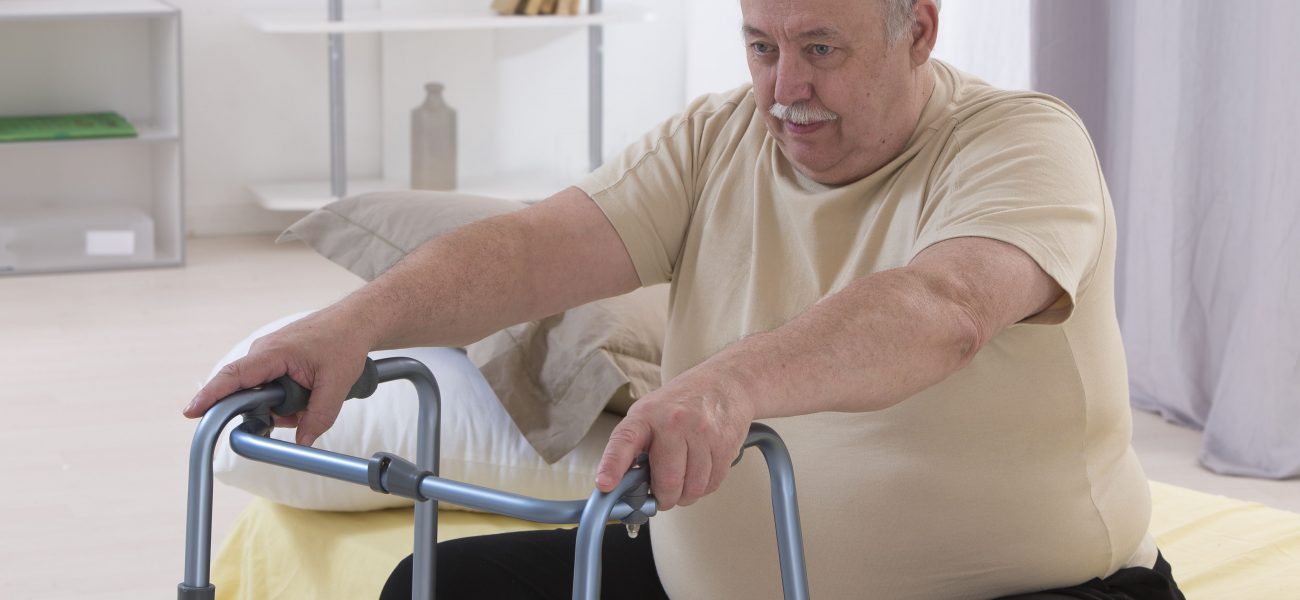Why is Urinary Incontinence Treatment Important?
The involuntary spilling of urine is referred to as urinary incontinence. It denotes that a person urinates even if they don’t want to because the urinary sphincter’s control is either lost or impaired. It is a widespread condition that affects a large number of individuals, and it is more prevalent in women than in males.
Many people have small pee leaks from time to time. Others may have more frequent loss of modest to moderate quantities of pee.
Urinary incontinence symptoms and types:
- Stress Incontinence: When you put pressure on your bladder by coughing, sneezing, laughing, exercising, or lifting anything heavy, urine spills.
- Urge Incontinence: You feel an unexpected, strong need to pee, which is followed by an involuntary loss of urine. You may need to urinate often, including throughout the night.
- Overflow Incontinence: You have frequent or continuous dribbling of pee as a result of a bladder that does not entirely empty.
- Functional Incontinence: You are unable to use the restroom on time due to a physical or mental handicap.
- Mixed Incontinence: You have more than one form of urine incontinence, which is usually a mix of stress incontinence and urge incontinence.
Urinary incontinence, if left untreated, can lead to a variety of consequences, the severity of which increases with the length of time it is ignored.
Some of the reasons why treating urinary incontinence is critical include:
- Underlying issues getting worse
- More common skin issues
- Affects mental health negatively
- Lower quality of life
- Increased infection risk
- Leads to a more rapid decline in the elderly
Fortunately, there are several therapy options available to assist you manage your urine incontinence symptoms. Your doctor will work with you to develop a treatment plan that is appropriate for you. You’ll begin with simple lifestyle modifications and work your way through the list until you find something that works.
FAQ’s
2. What happens if urinary incontinence is left untreated?
If urinary incontinence is left untreated, it can worsen over time, leading to more frequent and severe leaks. Prolonged exposure to moisture increases the risk of skin problems such as rashes, sores, and infections, which can become painful if neglected. Additionally, untreated incontinence can lead to urinary tract infections and impact hygiene, making daily living more challenging. Emotionally, it often causes anxiety, depression, and embarrassment, resulting in reduced participation in social or physical activities. Ignoring the problem also delays addressing underlying causes, such as bladder dysfunction or pelvic muscle weakness, making treatment more complicated later. In many cases, timely management significantly reduces these risks and improves comfort. Therefore, taking action early helps prevent physical complications and supports mental and emotional health, improving overall quality of life for those affected.
3. Can urinary incontinence treatment improve emotional well-being?
Yes, urinary incontinence treatment plays a major role in improving emotional well-being. Many people living with incontinence experience feelings of shame, anxiety, and social isolation due to fear of leaks. This emotional burden can lead to withdrawal from social interactions, loss of confidence, and even depression. Effective treatment—through lifestyle adjustments, pelvic exercises, hygiene products, or medical care—restores a sense of control over bladder health. With fewer leaks and better management strategies, individuals can participate in daily activities without constant worry, which significantly boosts confidence. Furthermore, addressing the condition reduces stress and makes people feel more comfortable discussing their challenges with family, caregivers, or medical professionals. This combination of physical improvement and emotional relief helps restore balance in life, allowing individuals to regain independence and maintain healthier, more fulfilling social relationships.
4. What treatment options are available for urinary incontinence?
Treatment for urinary incontinence varies based on the cause and severity. Common options include lifestyle changes such as weight management, reducing caffeine and alcohol intake, and scheduling bathroom visits. Pelvic floor exercises (like Kegels) strengthen bladder-supporting muscles, improving control. For moderate cases, bladder training techniques help regulate urination patterns. Medical treatments include medications that relax or strengthen bladder muscles and, in some cases, surgical interventions for structural issues. Additionally, using hygiene products like pant-style adult diapers provides discreet and reliable protection during daily activities. Consulting a healthcare provider ensures the right combination of methods is chosen based on individual needs. A personalized plan improves overall success in managing symptoms and reduces complications. By exploring these options, people can significantly improve their quality of life and maintain independence in daily routines.
5. How do hygiene products support incontinence treatment?
Hygiene products, such as adult diapers and absorbent pads, play an essential role in managing urinary incontinence. These products provide discreet protection, prevent leaks, and maintain dryness, reducing the risk of skin irritation and infections caused by prolonged moisture exposure. Modern incontinence products are designed for comfort, featuring soft materials, odor control, and snug fits, making them ideal for daily use. They allow individuals to continue regular activities—like traveling, socializing, or working—without constant worry about accidents. For those undergoing other treatments, hygiene products act as a supportive measure, improving overall quality of life while medical or therapeutic interventions take effect. Choosing the right size and type—like tape-style diapers for assisted care or pant-style for active users—enhances their effectiveness. Incorporating these products into a care plan gives individuals confidence, independence, and dignity while managing incontinence effectively.
6. When should someone seek medical help for urinary incontinence?
It is advisable to seek medical help for urinary incontinence as soon as leaks become frequent, interfere with daily life, or cause emotional distress. If incontinence is accompanied by symptoms such as pain, burning sensations during urination, blood in urine, or sudden changes in bladder habits, immediate medical attention is necessary. Early consultation allows healthcare providers to identify underlying causes, such as weakened muscles, infections, or nerve-related conditions, and recommend appropriate treatments. Waiting too long can worsen symptoms and make management more difficult. A medical professional can also provide guidance on exercises, lifestyle changes, and suitable hygiene products. Seeking help early not only improves bladder control but also restores emotional well-being and prevents further complications. Timely care ensures a better quality of life, giving individuals confidence and independence in handling daily activities.
7. How does untreated urinary incontinence affect daily life?
Untreated urinary incontinence affects various aspects of daily life, often leading to significant challenges. Physically, individuals may experience constant discomfort, skin irritation, and an increased risk of infections due to prolonged exposure to moisture. This condition also disrupts sleep, as many people wake up multiple times during the night to manage leaks. Emotionally, it leads to embarrassment, social withdrawal, and a loss of self-confidence, preventing individuals from participating in work, social events, or physical activities. Over time, this isolation can contribute to anxiety and depression. Additionally, practical routines like travel or exercise become difficult without proper management. Incorporating timely treatment and using supportive products can dramatically ease these challenges, allowing people to regain control and enjoy their daily activities. Addressing incontinence early improves comfort, restores independence, and enhances overall quality of life.
8. What role do lifestyle changes play in managing incontinence?
Lifestyle changes are a crucial part of managing urinary incontinence effectively. Maintaining a healthy weight reduces pressure on the bladder, improving control. Limiting bladder irritants like caffeine, alcohol, and carbonated drinks can prevent frequent urges. Staying hydrated with adequate water intake helps maintain bladder health, while avoiding overhydration. Scheduling regular bathroom visits trains the bladder, reducing sudden leaks. Incorporating pelvic floor exercises strengthens the muscles supporting the bladder, improving long-term control. Managing constipation with fiber-rich foods also prevents additional strain on the bladder. For many, these simple but consistent adjustments significantly reduce symptoms and delay progression. Pairing these lifestyle changes with medical guidance or supportive hygiene products enhances their effectiveness. Ultimately, small steps like these help people live more comfortably, build confidence, and manage incontinence as part of a balanced daily routine.
9. Can urinary incontinence be fully cured?
Whether urinary incontinence can be fully cured depends on its cause, type, and severity. Temporary incontinence caused by infections, certain medications, or lifestyle factors often resolves with treatment or adjustments. However, chronic incontinence due to age-related muscle weakening, nerve damage, or medical conditions may not always be completely cured but can be significantly improved. Treatments like pelvic floor exercises, bladder training, medications, and in some cases surgery, help manage or reduce symptoms. For many, combining medical care with supportive hygiene products restores independence and comfort. Early diagnosis increases the chances of successful management or recovery. Even if a complete cure is not possible, most individuals experience major improvements in bladder control, emotional well-being, and quality of life through consistent treatment and practical coping strategies tailored to their needs.
10. How does treating urinary incontinence improve confidence?
Treating urinary incontinence restores confidence by reducing leaks, improving comfort, and allowing individuals to engage in social, professional, and personal activities without fear of accidents. With treatment, people feel more in control of their bladder health, eliminating the constant stress of planning around bathroom access or hiding symptoms. Lifestyle changes, exercises, and hygiene products provide discreet support, enabling them to move freely and enjoy daily routines. As symptoms decrease, emotional well-being improves, boosting self-esteem and reducing feelings of embarrassment. This regained confidence encourages participation in social events, hobbies, and travel, which many previously avoided due to fear of leaks. Treating incontinence empowers individuals to live independently and focus on activities they enjoy. By taking proactive steps, they regain dignity and freedom, significantly enhancing their overall quality of life and mental health.






















